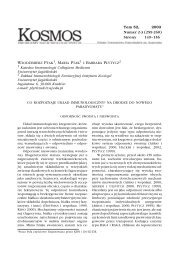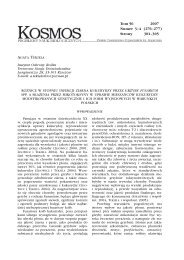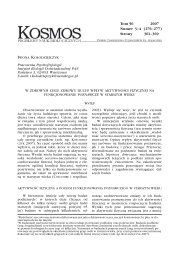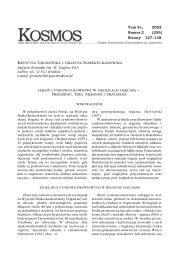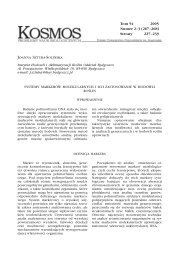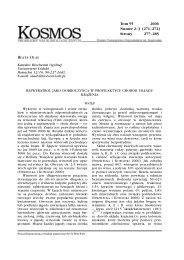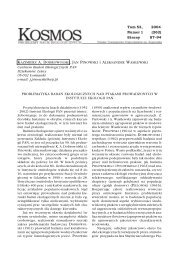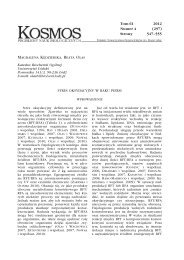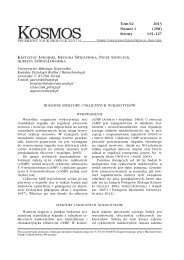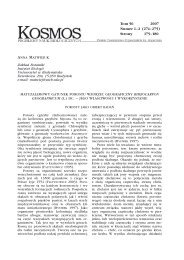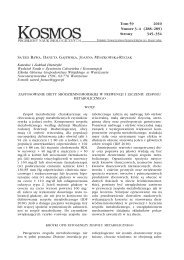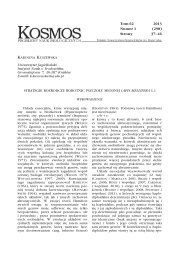JOLANTA SKANGIEL-KRAMSKA, KAROLINA ROGOZIŃSKA
JOLANTA SKANGIEL-KRAMSKA, KAROLINA ROGOZIŃSKA
JOLANTA SKANGIEL-KRAMSKA, KAROLINA ROGOZIŃSKA
Create successful ePaper yourself
Turn your PDF publications into a flip-book with our unique Google optimized e-Paper software.
154<br />
Two American molecular biologists Richard Axel<br />
and Linda Buck won the Nobel Prize for physiology<br />
or medicine in 2004. They discovered a large gene<br />
family that gives rise to many olfactory receptors.<br />
<strong>JOLANTA</strong> <strong>SKANGIEL</strong>-<strong>KRAMSKA</strong>, <strong>KAROLINA</strong> <strong>ROGOZIŃSKA</strong><br />
SENSE OF SMELL — THE ODORANT RECEPTOR CODE, NOBEL PRIZE IN PHYSIOLOGY OR<br />
MEDICINE IN 2004<br />
Summary<br />
AXELOWI R., BUCK L., 1991. A novel multigene family<br />
may encode odorant receptors: a molecular basis<br />
for odor recognition. Cell 65, 175–187.<br />
MALNIC B, HIRONO J., SATO T., BUCK L. B., 1999.<br />
Combinatorial receptor codes for odors. Cell 96,<br />
713–723.<br />
LITERAURA<br />
The discovery allowed to explore how the brain discriminates<br />
among different odors and to reveal, using<br />
a genetic approach, the organization of the olfactory<br />
system.<br />
ZOU Z., HOROVITZ L. F., MONTMAYEUR J-P., SNAPPER S.,<br />
BUCK L. B., 2001. Genetic tracing reveals a stereotyped<br />
sensory map in the olfactory cortex.<br />
Nature 414, 173–179.



